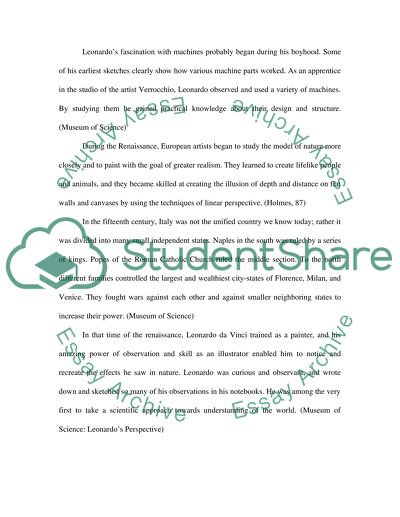Cite this document
(Leonardo da Vinci: Artist or Scientist Essay Example | Topics and Well Written Essays - 1750 words, n.d.)
Leonardo da Vinci: Artist or Scientist Essay Example | Topics and Well Written Essays - 1750 words. https://studentshare.org/biographies/1515072-leonardo-davinci-aritist-or-scientist
Leonardo da Vinci: Artist or Scientist Essay Example | Topics and Well Written Essays - 1750 words. https://studentshare.org/biographies/1515072-leonardo-davinci-aritist-or-scientist
(Leonardo Da Vinci: Artist or Scientist Essay Example | Topics and Well Written Essays - 1750 Words)
Leonardo Da Vinci: Artist or Scientist Essay Example | Topics and Well Written Essays - 1750 Words. https://studentshare.org/biographies/1515072-leonardo-davinci-aritist-or-scientist.
Leonardo Da Vinci: Artist or Scientist Essay Example | Topics and Well Written Essays - 1750 Words. https://studentshare.org/biographies/1515072-leonardo-davinci-aritist-or-scientist.
“Leonardo Da Vinci: Artist or Scientist Essay Example | Topics and Well Written Essays - 1750 Words”. https://studentshare.org/biographies/1515072-leonardo-davinci-aritist-or-scientist.


